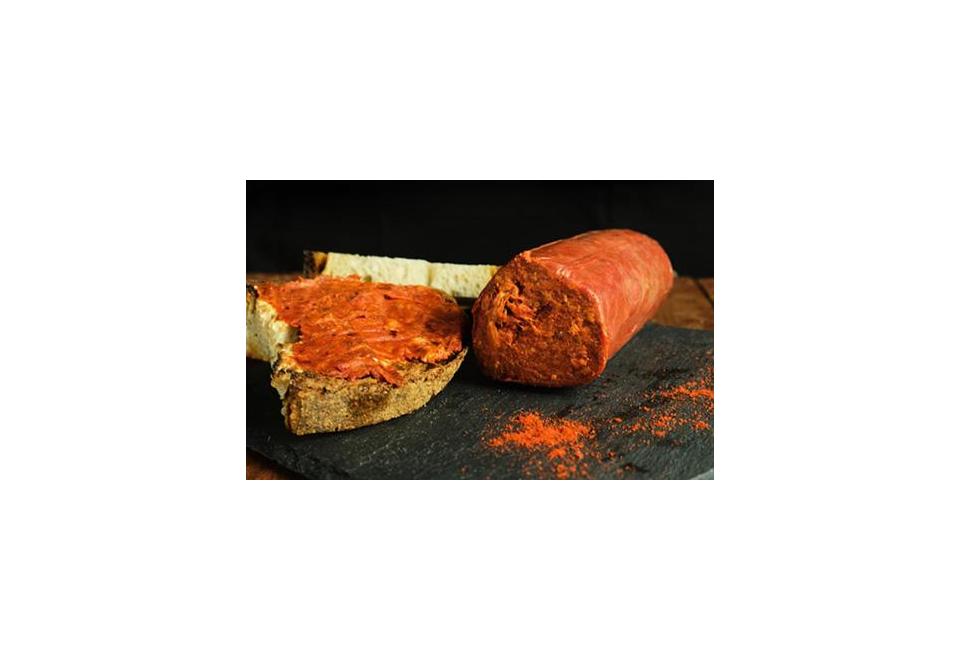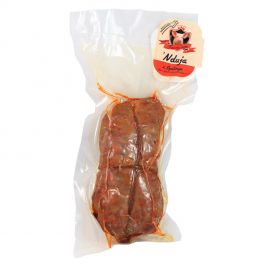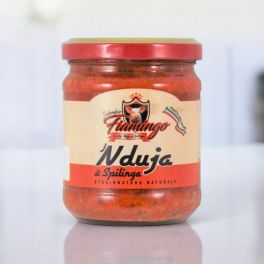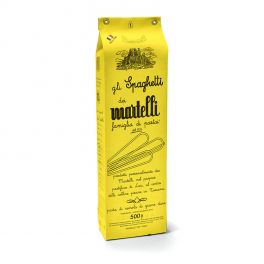Nduja Calabrese: What is the best and how to use it in cooking?
Calabrian 'nduja' is a sausage, perhaps the most famous of which comes from Spilinga, in Calabria. Its typical characteristics are its spiciness and spreadability. This sausage, in fact, is made with pork and dried hot chilli pepper; its strong and decisive flavour and its soft consistency make it an excellent base for sauces and other tasty recipes, as well as being an excellent snack to spread on a slice of bread.
What is Nduja Calabrese and how is it made?
The name nduja derives from the French andouille, which means sausage, but in reality, due to its conformation, this sausage is more like a salami. The nduja, according to the traditional recipe of Spilinga, is made from very fatty pork, in proportion to the lard, cheek and bacon.
To the chopped meat is added 30% of dried hot peppers (no preservatives). The chilli must be from Spilinga, an indigenous variety, very thin with not very fleshy berries.
Fine salt is added to the main ingredients and the sausage is then stuffed into a pig's caecum casing.
In an old-fashioned version, a further waste product is added, which in the past was not even sold but bartered with the intestines: the pork rind and fritters, which were first cooked with chilli pepper.
Preparation of nduja from Spilinga
Before proceeding with the preparation of the meat, the pork casing that will be used to stuff the salami is washed. The casing must be washed thoroughly with water and salt, both inside and out, so it must be turned inside out like a sock. This is to allow the water to penetrate well on the inside of the casing, the less hygienic part. Once the washing is finished, the casing must be left to soak in water and vinegar for 3-4 hours.
To prepare the meat, the dried chillies must first be ground and the meat separately chopped.
The meat must be passed through the mincer several times to obtain a creamy mixture.
Once this operation is finished, the hot chillies, previously chopped, and salt must be added to the meat. At this point, the meat must be kneaded to allow all the ingredients to blend and then left to dry for 4-5 hours.
The casing must be completely dry and the meat can then be stuffed. The process must be slow and careful to avoid air bubbles forming. The nduja must be pierced with small holes to let the excess air escape and the end must be sealed with a string and then the whole salami tied up.
Afterwards, the salami is lightly smoked with black locust or olive essences and left to mature. Curing ranges from a minimum of three months to a maximum of six months, depending on the size of the sausages. The room must be cool, dry and hygienically protected.
Origins of Nduja
Spilinga, home of nduja, is in the province of Vibo Valentia, Calabria. Although this tasty cured meat spread to Italy from Spilinga, its origins are very controversial. It seems, in fact, that nduja is not native to Italy, but comes from abroad.
Some scholars claim that it was introduced by the Spanish around 1500, while for others the Italian salami is linked to the French andoulle.
One thing is certain, nduja has always been produced in Spilinga and only in more recent times has it spread to the rest of the peninsula.
In order to protect the original Spilinga product, a consortium has been set up, which has been fighting for years to obtain PGI recognition for the Calabrian salami. In fact, Calabrian nduja does not have the PDO mark, since although the traditional preparation is only carried out in Spilinga, the pigs do not necessarily come from the area.
The president of the consortium is Francesco Fiamingo, who opened the Gabriella Bellantone company in 1999. The consortium has produced a very strict specification for the nduja production area, which is defined as Spilinga.
Calabrian Nduja: recommended recipes
The taste of nduja is enveloping, strong and spicy; therefore, in cooking it can be considered a flavour enhancer.
Its soft, doughy texture is an excellent base for preparing tasty, nutritious dishes; it is also excellent with strong-flavoured cheeses.
Nduja can be served with gorgonzola, caciocavallo or smoked provola. The cheese cannot be too delicate, otherwise its flavour risks being covered by the nduja.
Vegetables and pulses are also a good match, but eggs can also be enhanced.
A popular recipe is pasta with nduja sauce, which can be made in a variety of ways.
The most commonly used pastas are from Calabria, such as fileja, but other pastas can also be used, such as spaghetti or scialatielli from Campania.
Preparing pasta with nduja is simple: you only need half a Tropea onion, tomato puree, nduja, a little extra virgin olive oil and pecorino cheese.
Start by sautéing the finely chopped onion, then add the nduja and let it melt slowly over low heat. Finally, add the sauce and a little water and continue cooking the sauce for as long as the pasta is cooking.
If you want to find the nduja produced in Spilinga, visit our store. You can find the Fiamingo brand nduja whole or in jars. You can also find other tasty variants, for example the nduja with black pig of Calabria or the Calabrian ndua of San Vincenzo, an excellent company of real Calabrian cold cuts.


 Italiano (IT)
Italiano (IT)  Deutsch (DE)
Deutsch (DE)  Français (FR)
Français (FR)  Español (ES)
Español (ES)  Polish (PL)
Polish (PL) 




Share on: